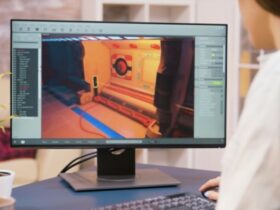Introduction Of The Best Thermo Scientific Tips Every Scientist Should Know
The Best Thermo Scientific Tips Every Scientist Should Know. It’s no secret that scientists are some of the most innovative people around. And with technology moving at such a rapid pace, it’s more important than ever for scientists to keep up. In this blog post, we’ll highlight some of the best thermo scientific tips every scientist should know. From data analysis to information management, these tips will help you stay ahead of the curve and make the most out of your research.
Keep a lab notebook
Thermo Scientific is a company that produces high-quality scientific equipment and supplies. A lab notebook is an important tool for any scientist, and Thermo Scientific has some great tips to keep your notebook organized and efficient.
The first tip is to make sure your notebook is large enough to fit all of your notes. Not only will this save you time searching for specific information, but it will also help you stay organized overall.
Another helpful tip is to write down the date, title, and page number of every entry in your notebook. This will make it easy to find whatever information you need quickly.
Finally, be sure to include a list of what materials you will be working on within each section of your notebook. This way, you won’t have to search for them later on in the book!
Get organized
Thermo Scientific’s design software, AMIRA, offers scientists an efficient and user-friendly way to organize their data. A few tips to help you get started:
1. Use folders and named files to group related data. This will make it easier to find the specific information you need when working on a project.
2. Use text or symbol labels to quickly identify different types of data.
3. Consolidate redundant data into single files or folders. This will free up space on your hard drive and help you keep your research more organized and efficient.
4. Automatically back up your files regularly using Thermo Scientific’sAMIRA Backup Software. This will safeguard your work in the event of computer failure or accidental deletion of files.
Invest in a good microscope
If you’re like most scientists, you probably have a few microscopes sitting around your lab—but are you using them to their full potential? Here are nine tips for getting the most out of your microscope:
1. Get a good light source.
A good microscope needs a strong light source to see clearly. If you don’t have an adjustable light source, try getting one that has a remote control so you can change the intensity of the light as needed.
2. Use the correct magnification.
When looking at things under a microscope, it’s important to use the right magnification factor (or power). To find out what magnification is best for viewing a specimen, divide the object’s length by its width (in millimetres) and multiply that number by 100. For example, if you want to view an object that is 50 mm long and 25 mm wide, use a magnification of 400x.
3. Clean your microscope regularly.
microscopic particles can build up on lenses and other parts of your microscope over time, which can decrease its ability to see clearly. Keep your microscope clean by using a soft cloth or lens cleaning solution (alcohol works well) and wiping down all surfaces. Don’t forget about the eyepieces!
4. Prepare specimens before looking at them under the microscope.
It can be difficult to see small details on specimens if they’re not properly prepared beforehand—so make sure to wash your hands thoroughly before handling any specimens
Use software to analyze data
Thermo Scientific offers a variety of software products for data analysis, ranging from basic statistical tools to sophisticated signal processing and machine learning algorithms. This article provides a brief overview of the most common Thermo Scientific data analysis software products, with tips on how to use them effectively.
Bulk Data Downloading: The first step in any data analysis is downloading the data into a usable format. Thermo Scientific offers several bulk data downloading options, including its own Bulk Data Downloader software, the free Azureus open-source program, and third-party programs like Microsoft Excel or LibreOffice Calc. You Can Also Read Top Gaming Tech Tips You Should Know About.
Statistical Analysis: After the data has been downloaded, it can be analyzed using one of Thermo Scientific’s many statistical analysis tools. These include parametric and nonparametric methods for bivariate and multivariate data; standard deviation; correlation; linear regression; logistic regression; and survival analysis.
Data Visualization: Many scientific datasets contain complex information that can be difficult to understand or interpret visually. Thermo Scientific’s data visualization tools can help make this information more accessible by displaying it in graph form, including bar charts, scatter plots, histograms, line graphs, and pie charts.
Subscribe to scientific journals
Scientific journals offer a wealth of information for scientists. Not only do they contain the latest research findings, but they also offer tips and advice from experts.
To maximize the impact of your research, it is important to subscribe to scientific journals. This way, you will be able to keep up with the latest advances and find guidance on how to improve your work. Furthermore, subscribing to scientific journals can help you connect with other scientists and foster collaborations.
There are several factors that you should consider when choosing which scientific journals to subscribe to. For example, you should consider which fields of science you are interested in and whether the journal is focused on research or publication. Additionally, you should consider the cost of a subscription and whether there are any special offers available.
Use social media to share your work
If you’re a scientist, social media is a powerful tool to share your work with the world. With platforms like Twitter, Facebook, and LinkedIn, scientists can easily connect with others in their field and share their latest findings.
Twitter is a great way to share short snippets of your research with the world. Simply create a Twitter account and start sharing short URLs (links) to your research articles or blog posts. You can also add photos and videos to your tweets if you want to show off your work in more detail.
Facebook is a great place to share longer essays about your research. Remember that Facebook is an “open platform” so be sure to write engagingly so readers will want to stay around for the whole post! You can also add photos and videos of your experiments if you want to capture people’s attention.
LinkedIn is perfect for sharing detailed information about your research projects with potential collaborators or funding agencies. LinkedIn allows users to create “jobs” listing all of their current and past positions, as well as complete bios detailing their scientific experience. This information makes it easy for others to find out more about who you are and what you have done before, which could lead them to fund or collaborate with you on future projects.
Take time for yourself
Thermo Scientific is committed to making life easier for scientists by providing tools and tips that help them save time and get the most out of their research. Here are some of the best tips every scientist should know:
1. Use Thermo Scientific software to organize your data.
2. Use Thermo Scientific software to analyze your data.
3. Use Thermo Scientific software to visualize your data.
4. Use Thermo Scientific software to communicate your results effectively.
Stay up-to-date on scientific advances
Thermo Scientific’s blog offers up-to-date scientific advances to help scientists stay ahead of the curve. In addition to posting articles on a variety of scientific topics, Thermo Scientific also offers an “Ask the Scientists” feature, in which readers can submit questions for experts to answer. This month’s Ask the Scientists asks experts about the latest tips for working with thermocyclers.
According to Thermo Scientific’s Ask the Scientists blog, one important tip is to be aware of safety guidelines when using thermocyclers. Another guideline is to use a calibrated thermocycler whenever possible, to ensure accurate temperature readings. Finally, keep track of your experiments’ progress by logging data in a lab notebook or software program.
Respect the authority of your colleagues
To be respected as a scientist, it is important to have respect for the authority of your colleagues. This means understanding their expertise and not challenging their findings or questioning their methods. It is also important to be patient with others and not be afraid to ask for help when you don’t understand something. Finally, always maintain a professional demeanour no matter how angry or frustrated you become. These tips will help you build respect and ensure that your contributions as a scientist are valued.
Conclusion
There is a lot of information out there that can be confusing and overwhelming for scientists. In this article, we will provide some tips on how to stay organized, learn new techniques, and track your progress so that you can improve your work. By following these simple guidelines, you should be able to manage everything associated with being a scientist while still keeping up with the latest breakthroughs.


















Leave a Reply
View Comments